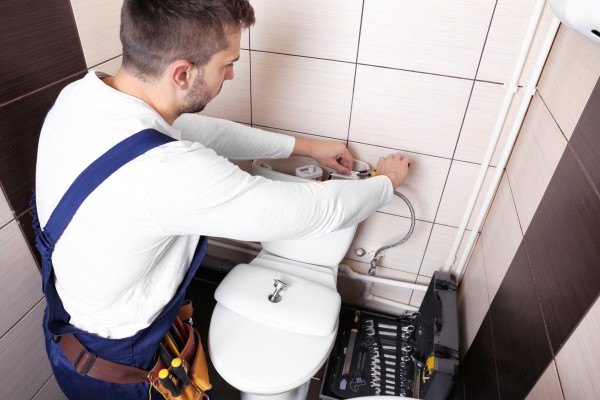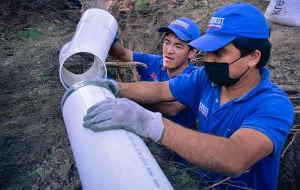
Toilet Installation in Elkton VA involves the professional installation of toilets in residential and commercial settings. Here are the typical steps involved in Toilet Installation in Elkton VA:
- Site Assessment:
- A professional plumber will assess the location where the toilet is to be installed. They will check the existing plumbing, water supply lines, and the condition of the bathroom floor.
- Toilet Selection:
- Based on the client’s preferences and the plumbing layout, the plumber may help the client choose a suitable toilet. This may include selecting the type of toilet (e.g., standard, elongated, wall-mounted) and features such as water-saving options.
- Preparing the Area:
- The plumber will prepare the area for installation by removing the old toilet, if present. They will shut off the water supply and disconnect the existing toilet.
- Floor Flange Installation:
- The floor flange is a pipe fitting that connects the toilet to the drainpipe in the floor. The plumber ensures that the floor flange is securely in place and properly aligned.
- Wax Ring Installation:
- A wax ring is placed on the flange to create a watertight seal between the toilet and the floor. This ring prevents water leakage.
- Toilet Bowl Installation:
- The plumber positions the toilet bowl over the wax ring and secures it to the floor flange. The bowl is carefully aligned to ensure a proper fit.
- Tank Installation:
- If the toilet has a separate tank, the plumber installs the tank onto the bowl. This involves connecting the tank to the bowl with bolts and securing the tank in place.
- Water Supply Connection:
- The plumber connects the water supply line to the toilet tank, ensuring a secure and leak-free connection. They also check for any potential leaks.
- Toilet Seat Installation:
- The toilet seat is installed according to the manufacturer’s instructions. The plumber ensures that the seat is securely attached to the bowl.
- Testing:
- The plumber performs a series of tests to ensure the toilet functions correctly. This includes flushing the toilet multiple times, checking for leaks, and verifying that the tank refills properly.
- Sealing:
- The plumber may apply a sealing material around the base of the toilet to prevent water seepage and to create a finished appearance.
- Clean-Up:
- Once the installation is complete and tested, the plumber cleans up the work area, removing any debris and ensuring that the bathroom is left in a tidy condition.
It’s important to hire a licensed and experienced plumber for toilet installation to ensure that the work is done correctly and complies with local plumbing codes. Professional installation helps prevent issues such as leaks and ensures the proper functioning of the toilet.





